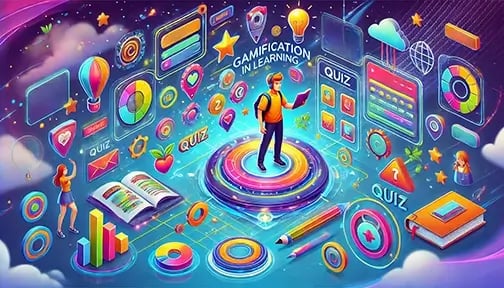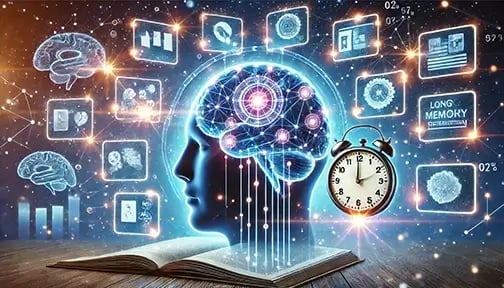Memorization is a fundamental aspect of learning, whether you are a student trying to retain historical dates, a medical student memorizing complex terminology, or a professional learning new skills. However, traditional methods of memorization, such as rote learning and repetitive drilling, can often feel tedious and uninspiring. Enter gamification of learning —a powerful approach that turns the learning process into an engaging and interactive experience.
Gamification of learning leverages game-like elements such as rewards, competition, progress tracking, and storytelling to make learning fun and effective. By integrating these elements, educators and learners can transform memorization from a chore into an exciting challenge. In this article, we will explore the principles of gamification, its benefits for memory retention, and practical strategies to gamify the memorization process in various contexts.
The Science Behind Gamification and Memory Retention
Before diving into specific techniques, it's important to understand why gamification works for memorization. The human brain is wired to respond to rewards and challenges, which is why games are so engaging. When we play games, our brains release dopamine, a neurotransmitter associated with motivation, pleasure, and memory retention. This release of dopamine strengthens neural pathways, making it easier to remember information.
Furthermore, research has shown that active engagement and emotional involvement significantly enhance memory retention. Traditional memorization methods often lack these key components, making it difficult for information to stick. By incorporating gamified elements, learners experience increased motivation, greater engagement, and improved recall.
Key Elements of Gamification in Memorization
To effectively gamify memorization, it's essential to incorporate game mechanics that stimulate motivation and enhance learning. Here are some core elements:
1. Points and Rewards
One of the simplest ways to gamify learning is through a points and rewards system. Learners earn points for completing tasks, mastering new information, or achieving milestones. These points can be exchanged for rewards, such as small prizes, virtual badges, or access to special content.
For example, language learning apps like Duolingo use a points system to encourage daily practice. Users earn XP (experience points) for completing lessons, keeping them motivated to return and continue learning.
2. Levels and Progression
Breaking down learning into levels helps learners track their progress and stay motivated. Each level represents a new challenge or a set of knowledge milestones, creating a sense of accomplishment as they advance.
A student preparing for an exam might structure their study sessions into different levels, with each level focusing on a specific topic. Unlocking higher levels can be tied to mastery tests or quizzes, ensuring gradual learning and retention.
3. Competition and Leaderboards
Friendly competition can be a strong motivator. Introducing leaderboards where learners can compare their progress with peers fosters a sense of achievement and drive. This can be done in classrooms, corporate training environments, or through digital learning platforms.
For instance, a history teacher might create a weekly quiz competition where students earn points for correct answers, with a leaderboard showcasing top performers. This not only makes learning fun but also encourages students to engage more with the material.
4. Challenges and Missions
Rather than viewing memorization as repetitive drills, framing it as a series of challenges or missions makes the process more engaging. Challenges could involve solving puzzles, unlocking secrets, or completing themed missions related to the subject matter.
A medical student studying anatomy could participate in an "escape room" style challenge where they must recall muscle groups to "unlock" the next stage of the game. Such thematic engagement helps improve recall and keeps learners entertained.
5. Storytelling and Narrative-Based Learning
Humans are naturally drawn to stories. Incorporating storytelling into memorization techniques can create a more immersive experience. Instead of memorizing random facts, embedding them within a narrative helps contextualize the information.
For example, a student learning about the American Revolution could engage in a role-playing game where they take on the role of a historical figure. They might need to recall key events and dates to make strategic decisions within the game, reinforcing learning through active participation.
Practical Strategies to Implement Gamification of Learning
Now that we understand the core elements of gamification of learning, let’s explore some practical strategies to incorporate them into memorization practices.
1. Turn Flashcards into a Game
Flashcards are a traditional memorization tool, but they can be gamified to enhance engagement. Digital apps like Quizlet offer competitive flashcard games where learners race against the clock or challenge others to test their recall speed.
Alternatively, a simple way to gamify flashcards is through a "survival mode," where learners must answer a certain number of correct responses to progress. Incorrect answers might send them back a level, adding an element of challenge.
For high-quality physical flashcards, check out Debra Dale Designs Flash Cards, designed for students and professionals looking to improve their memorization skills.
2. Use Memory Apps with Gamification of Learning Features
Several apps are designed specifically to gamify memorization. Apps like Anki use spaced repetition techniques combined with point systems, while Memrise incorporates storytelling and real-world context to reinforce vocabulary learning.
3. Implement Role-Playing and Simulation Games
For subjects that require extensive memorization, such as history, science, or medical studies, role-playing and simulation games can be highly effective. Creating classroom or study group activities where learners take on different roles and must recall information within a scenario adds excitement to learning.
For instance, medical students can engage in a simulated hospital environment where they diagnose virtual patients based on memorized medical conditions.
4. Create Escape Room Challenges
Escape rooms are a fantastic way to gamify learning, requiring participants to solve puzzles based on their knowledge to "escape." Teachers or learners can design escape rooms with clues that require recalling specific facts, equations, or terminology to progress.
A chemistry class might create an escape room where students must solve chemistry-related puzzles, such as balancing chemical equations, to unlock the next stage.
5. Introduce Interactive Quizzes and Kahoot! Competitions
Interactive quizzes, such as those available on platforms like Kahoot! and Gimkit, provide an entertaining and competitive way to reinforce memorization. These quizzes often feature timers, instant feedback, and leaderboard rankings to enhance engagement.
Educators and trainers can use these platforms to create subject-specific quizzes that make memorization enjoyable while tracking learner progress.
Conclusion: Making Gamification of Learning Playful and Effective
Gamifying memorization is not just about making learning fun—it’s about leveraging human psychology to enhance memory retention and motivation. By incorporating game mechanics such as points, levels, storytelling, and competition, learners can transform rote memorization into an exciting and rewarding process.
Whether you’re a teacher, student, or lifelong learner, implementing these strategies can make studying more engaging and effective. So, the next time you face a memorization challenge, consider turning it into a game—because learning should feel like play!
For high-quality study materials, including flashcards designed for effective memorization, explore Debra Dale Designs Study Cards.




